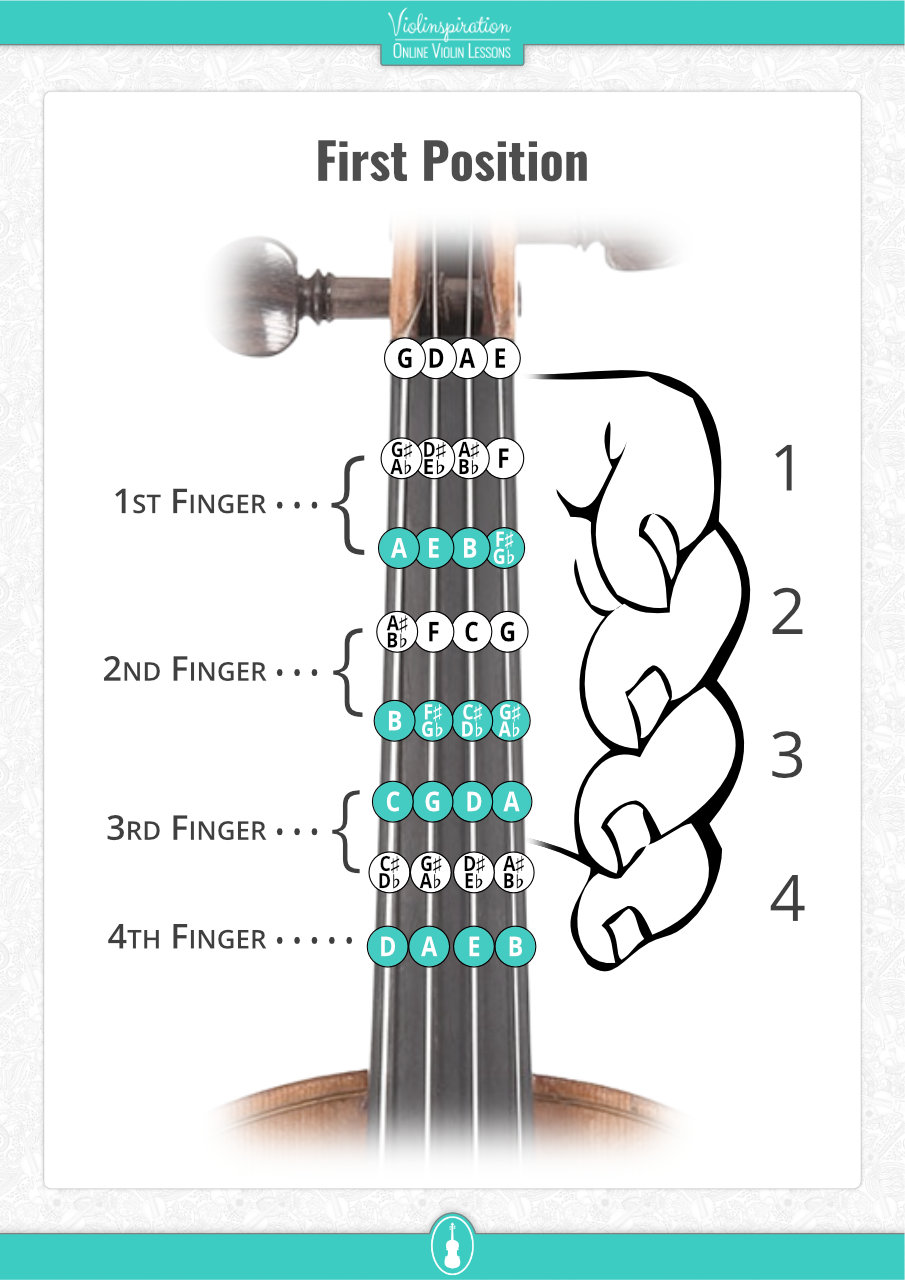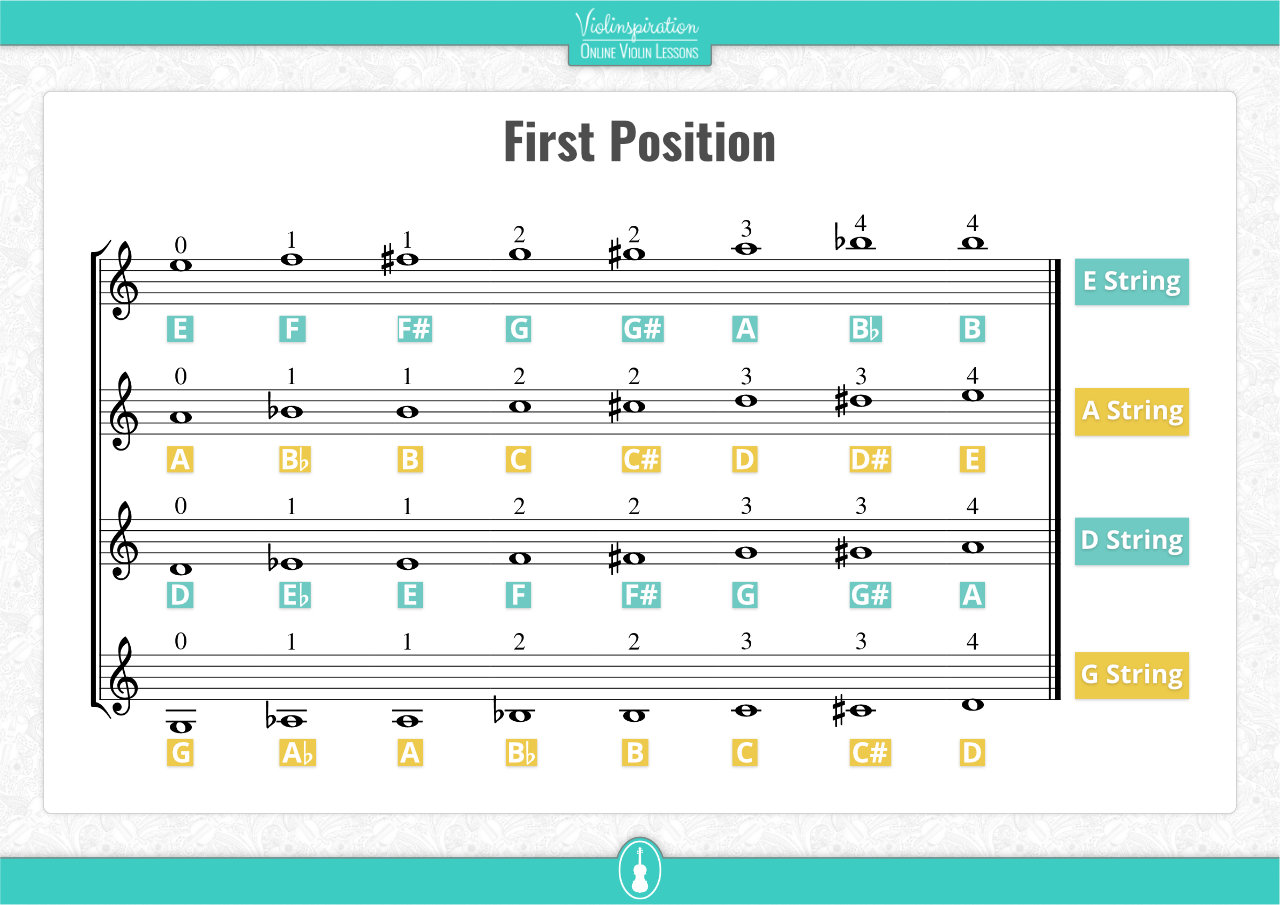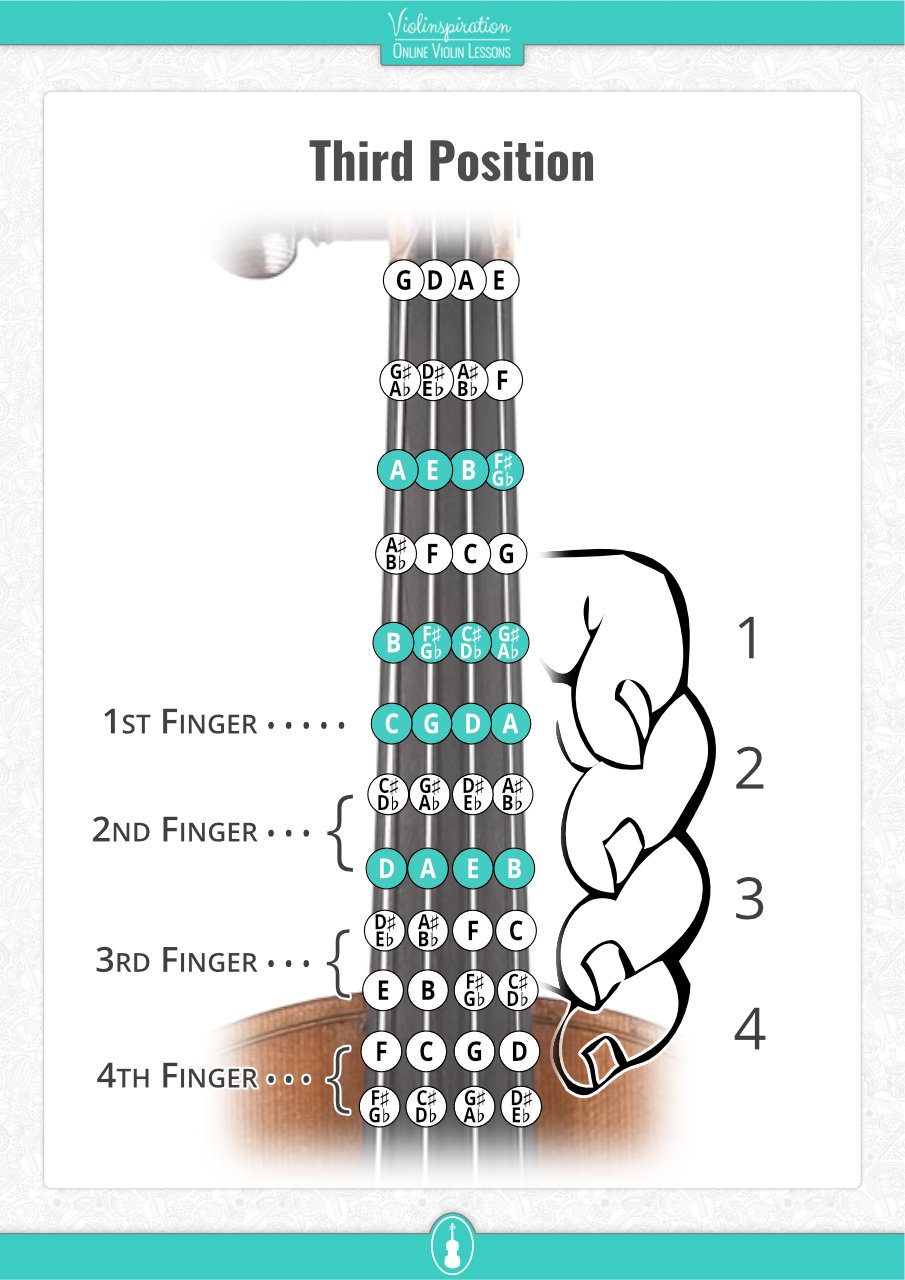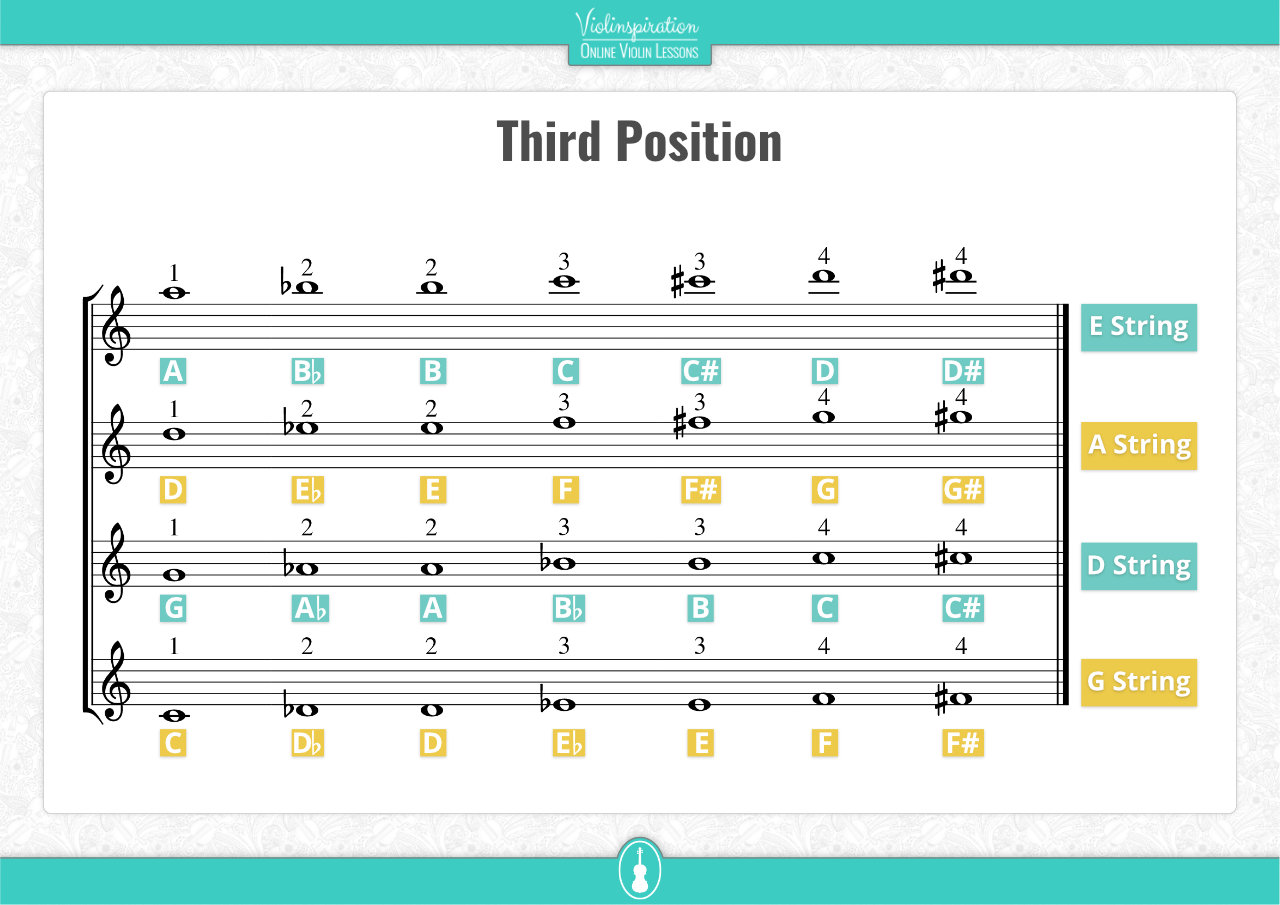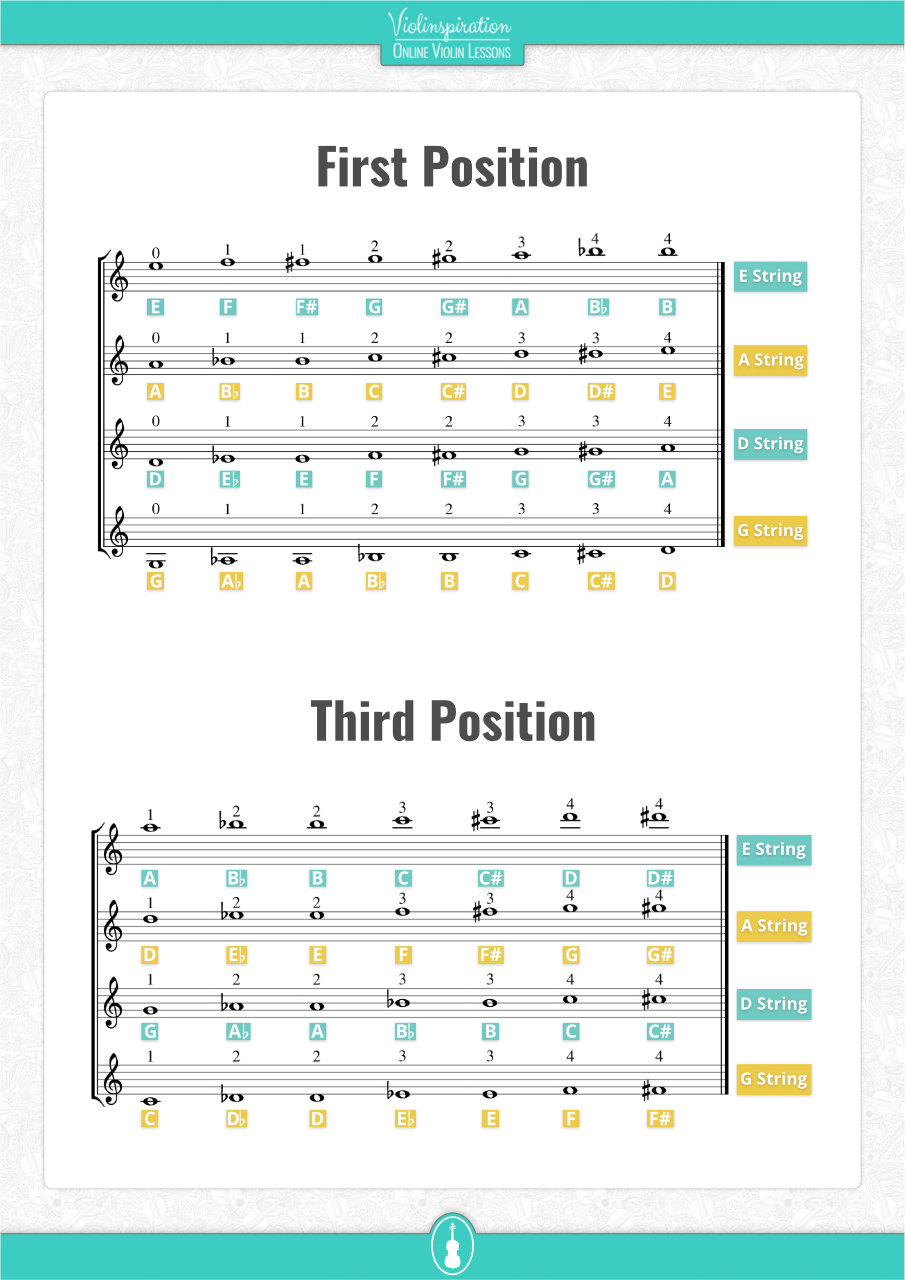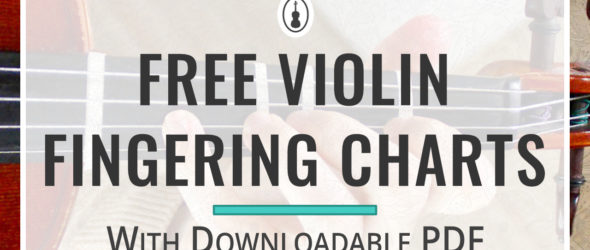
If you’re just starting to play the violin, a violin fingering chart can be very useful! It gives you an overview of where the notes are on the violin. This is a helpful reference when learning to play the violin in a new position. You can use these charts to help train your ears to hear in pitch as well.
On this page you can find 8 free printable fingering charts, ordered by level and use. All are available on this page and downloadable in PDF.
As a bonus, I also added a free booklet with fingering charts of each violin position.
Print these fingering charts and put it up somewhere in your room. This way, you will have a reference in your next practice session!

Get your free violin charts
for all the positions!
Free Printable Violin Fingering Charts
Here are all the free downloadable violin fingering charts. To download a PDF version of all the fingering charts in this post, simply click on the download button in the bottom and let me know where I should send the charts. If you are a violin teacher, feel free to share these charts with your students.
First Position Violin Fingering Chart
If you are currently an absolute beginner, this violin fingering chart is for you! It shows all the notes in the basic violin position, which is called the first position. When you play in 1st position, your left hand is located closest to the scroll. Your first step to getting proficient at violin playing is learning to play all the notes in first position in tune.
All Violin Notes in a First Position Chart
In this free violin fingering chart you can see all the notes on every violin string in first position. This chart comes in handy if you are trying to identify a note in sheet music, but are unsure where exactly the note is located on the fingerboard. The string names are also displayed on each string for easy reference.
You can use the chart to see where the notes are on the violin fingerboard. Then, using your ear, or a tuner, you can search for the correct pitch on your violin.
Each note on the violin is commonly played with a certain finger. I added the finger numbers which you should play every note with in the chart. Are you unfamiliar with the finger numbers? I wrote an easy explanation at the bottom of this blog post.
Easy Violin Scales Chart [PDF]
One of the best ways to get familiar with all the notes on the violin is to practice violin scales. Scales are also one of the best ways to learn to play in tune. There are five scales usually recommended for violin beginners. These scales are also the most common major scales that are used in violin repertoire.
The scales that are available in this violin finger chart are:
- A Major Scale
- G Major Scale
- D Major Scale
- C Major Scale
- B Flat Major Scale
If you would have to choose only one scale to practice, go for the G Major scale! It ranges all the way from the G string to the E string and covers many important notes on the fingerboard.
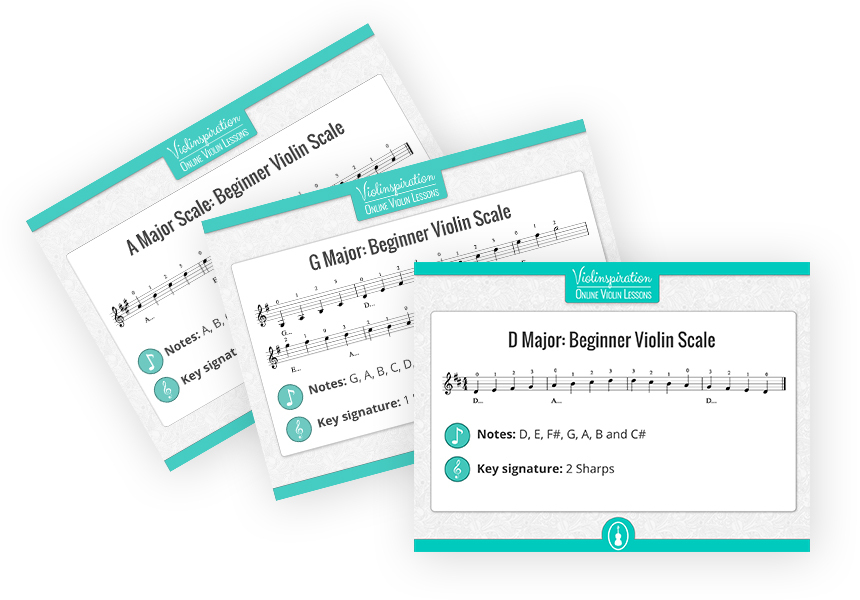
Free Download: 5 most common violin scales for beginners
Advanced Violin Fingering Chart
This violin fingering chart is meant for advanced players. It shows every note found on the violin fingerboard up to the 4th finger in the 8th position.
You can see every note in each position and with which fingering it would be written on a musical staff.
The chart will help you easily identify which position a note is in that you find in sheet music.
If you are an intermediate to advanced player and you wish to learn to play each position on the violin, I also recommend reading my “Guide to the Violin Positions” blog post, where I will teach you exactly how to go about learning every single violin position.
Advanced Violin Scales [PDF]
If you are familiar with all the most common one and two octave scales, you will be able to benefit from my advanced violin scales chart with finger numbers.
This document covers the most common 3-octave scales for advancing players.
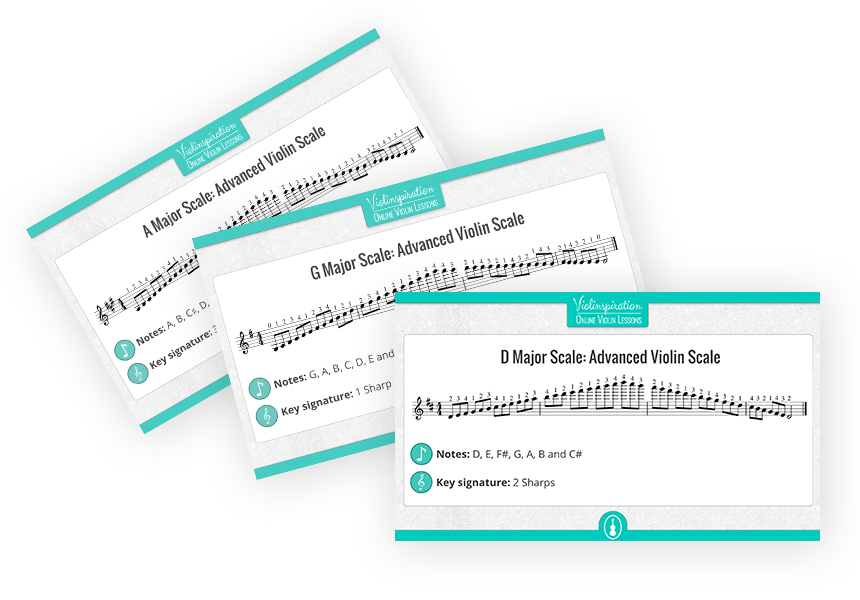
Free Download: 5 most common 3-octave scales
How to Use the Violin Fingering Charts
When you start working with violin fingering charts as a violin beginner, you might not understand all the symbols and notes used on the chart.
That is why I will share some answers to questions you may have when working with the charts here:
How can I find the notes of the chart on my fingerboard?
If you are an absolute beginner, you might have a hard time finding the notes depicted on the chart.
That is why I recommend using fingerboard tapes! Fingerboard tapes can be placed on the neck of your violin and are guides that help you find the proper finger placement.
I made a video that explains how to put the fingerboard tapes on your violin that you can watch here:
You will see that on the chart, I also depicted where the fingerboard tapes are that I put on the violin in the video.
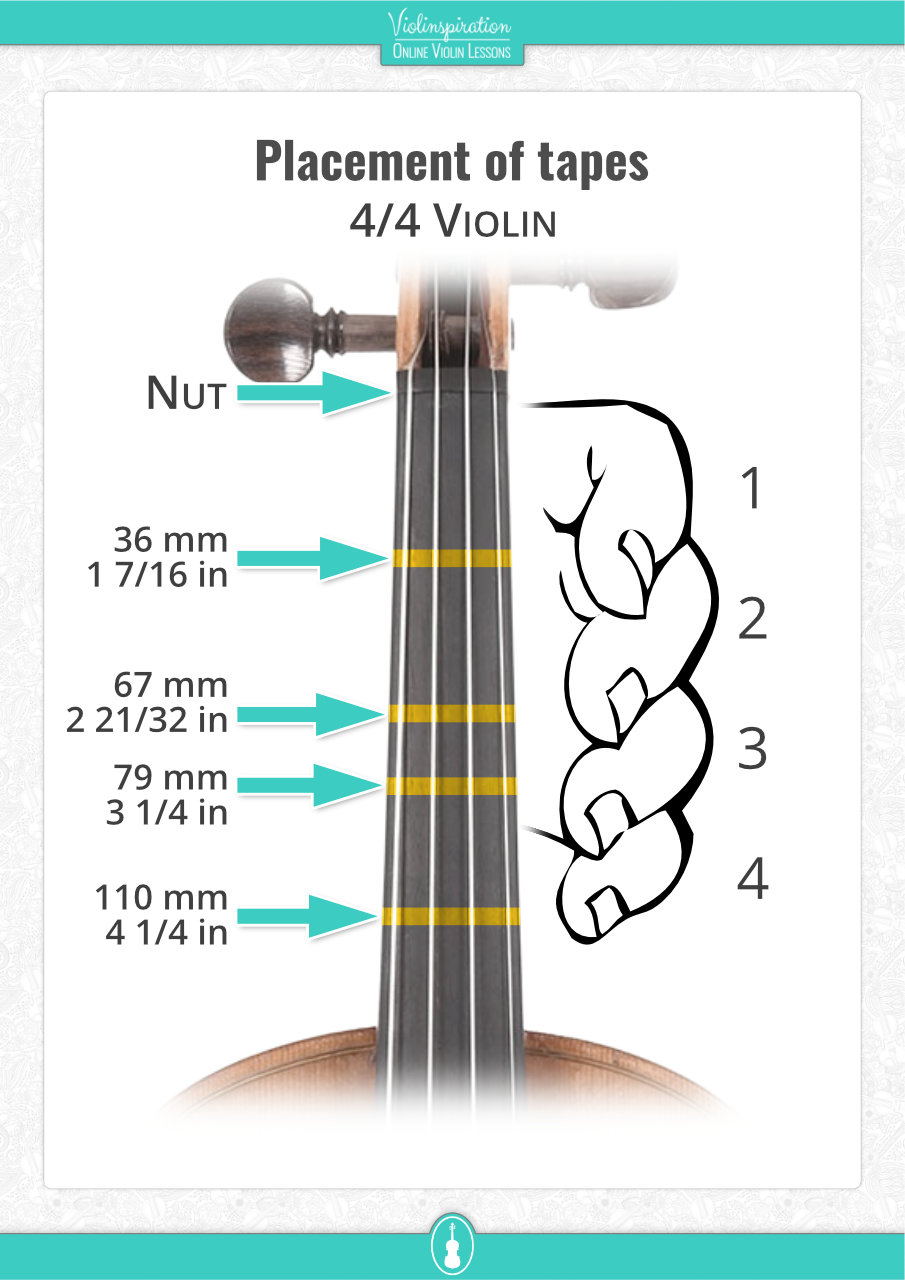
Why are there two notes in the circles of the finger placement chart?
You will notice that in some circles there are two notes (semitones). You will see both a flat note and a sharp note.
The reason for that is that this specific note on the violin has two names! A “sharp” name and a “flat” name. If you were to play both notes, they would sound exactly the same.
For instance, the pitch of A flat and G sharp will sound the same.
So why do these notes have two names you might ask?
This is because of certain music theory rules. The name of the note will change to a flat or a sharp depending on the key signature.
For a beginner violinist however, the most important thing to know is that the two notes sound exactly the same. It means that for both notes, you have to place your finger at the same location.
What do the numbers on the chart mean?

The numbers above each staff show what fingers to use to play these notes on your fingerboard. These are also called “the finger numbers”.
Every finger of your left hand is assigned a number, except the thumb. The thumb does not have a number, because we use the thumb to hold the violin.
The index finger is given the number 1; the middle finger is given 2; the ring finger is given 3; and the pinky finger is given 4.
That is also why you will hear violin teachers use the following names for the fingers:
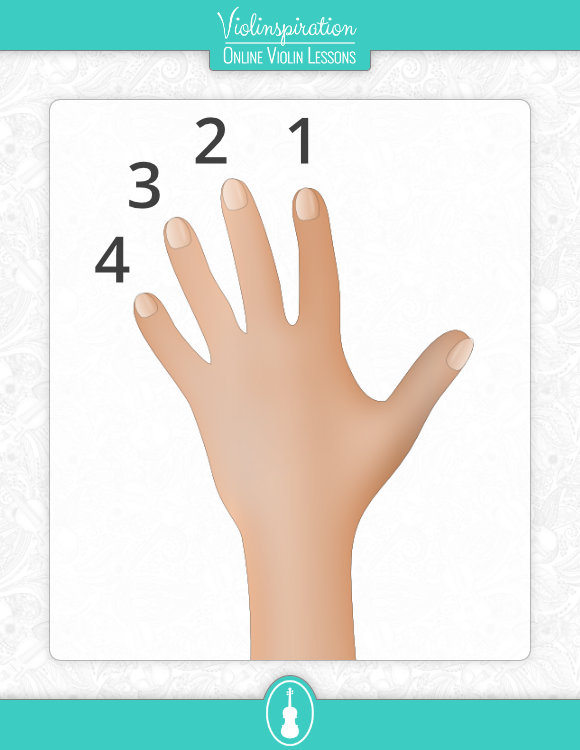
- The first finger (index finger)
- The second finger (middle finger)
- The third finger (ring finger)
- The fourth finger (pinky finger)
Get familiar with the names of the fingers, as you will hear them very often when you start your violin lessons!
Also make sure to use the correct finger for each note – that way your left hand will always stay in a proper position.
What do the letters above and/or below the staff mean?
In some charts you will see letters below the staff. These are either the note names or the string names.

The letters below the staff on the image above show the note letter name.
You will notice two symbols that are depicted next to the notes: the sharp sign (♯) and the flat sign (♭).
You can learn more about these so-called “accidentals” and what function they have in music in my other blog post about key signatures.

In the violin scales charts, you can see a letter below the notes that represents the name of the string you will be playing on.
More Violin Fingering Charts
If you are looking for more helpful violin fingering charts, there are two other blog posts I wrote that you would probably also enjoy.
First of all, my “all violin notes for beginners” post. In this post, I lay out all notes on each violin string. There are also fingering charts included for the notes on each string.
Secondly, my posts about the violin positions. If you would like to learn more about the violin positions and how to go about practicing each one of them, I recommend having a look at this blog post:
Download All Violin Fingering Charts [PDF]
Here you can download all violin fingering charts that are mentioned in this blog post in a full resolution PDF version:

Get your free violin charts
for all the positions!
Last Note
Over the years I created these violin fingering charts for my students to help them learn the violin.
I hope that by sharing them here on this blog, I will be able to help many other beginner violinists across the world to learn the basic finger positions!
Please don’t be overwhelmed by the amount of violin fingering charts on this page. In case you are overwhelmed: start with the first position fingering charts and learn the beginner scales.
If you start to master the scales with the right finger positions, you are already well on your way to becoming a proficient violinist!
